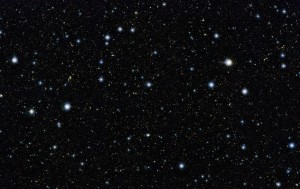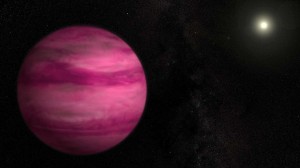Podcaster: Pamela Quevillon
Title: A Small World! Window to The Universe
Organization: Speak Easy Narration
Link : http://speakeasynarration.com ; http://www.unawe.org/kids/unawe1348/
Description: Space scoop, news for children. Today’s we bring you a double feature, discussing Hubble’s eye on the sky and our search for worlds orbiting other stars.
Bio: Pamela Quevillon is a voice actress who most often lends her voice to science and science fiction content. You can find her work on the “Escape Pod” and “365 Days of Astronomy”, as well as on her site
Today’s sponsor: This episode of “365 Days of Astronomy” is sponsored by — no one. We still need sponsors for many days in 2013, so please consider sponsoring a day or two. Just click on the “Donate” button on the lower left side of this webpage, or contact us at signup@365daysofastronomy.org.
Transcript:

Hello and welcome to Space Scoop, a product of “Universe Awareness.” Our goal is to inspire every child with out wonderful cosmos.
Today’s we bring you a double feature, discussing Hubble’s eye on the sky and our search for worlds orbiting other stars.
Our first story is called “A window to the Universe.”

The big, blue stars scattered across the picture are stars in our galaxy, fairly close by, which is why they appear so large and bright. Credit: NASA, ESA, M. Carollo (ETH Zurich)
Let’s imagine that the picture used for this show’s album art is the view from your bedroom window. What do you notice first as you’re gazing out? Probably the big, blue stars scattered across the picture. These are stars in our galaxy, fairly close by, which is why they appear so large and bright. If we zoom in further, what do you see? It’s hundreds of distant galaxies! Grand, spiral galaxies; irregular, shapeless galaxies; young blue galaxies; and older red galaxies. This picture has everything! And doesn’t it blow your mind to realise that each of the tiny dots in this picture is a galaxy containing billions of stars, many of which are much bigger than our Sun?!
Did you know that looking at this picture has given you a super-power? You’re time-travelling into the past! How? Well, light takes time to travel through space to our telescopes, and our eyes. So, if we look at very distant objects, like these galaxies, we’re looking at very, very old light. Although this photograph was taken recently, you’re looking at these objects as they were when they were young!
Obviously, this isn’t really the view from your window; it’s the view of the Hubble Space Telescope. This telescope is orbiting over 500 km above the Earth’s surface. Every 97 minutes, it completes an orbit around Earth, moving at about 8 km per second—which is fast enough to travel across the United States in about 10 minutes. As it travels, Hubble’s camera captures light, so that we can enjoy these breath-taking views of the cosmos. Have a look at the top 100 Hubble images online by following the link in this episodes show notes!
In addition to taking pretty pictures, Hubble has done some pretty solid science, too! It’s helped us work out the age of the Universe and shown us alien worlds. It has even introduced us to a mysterious, invisible force that is stretching the very fabric of our Universe. A force so strong that one day, it might tear the whole place apart!
Here’s a Cool Fact: The Hubble Telescope is close to retirement. Sometime after 2014, its vital systems will fail, making it useless. Unless some kind of rescue mission is attempted (which is pretty unlikely), it will re-enter the Earth’s atmosphere and burn up sometime between 2019 and 2030.
A lot of people think the Hubble Space Telescope is the world’s most best telescope. The truth is, different telescopes can be the best for different things, and when it comes to detecting super faint objects, Hubble can’t compete against giant Earth-based telescopes like the Subaru telescope in Hawai.
In our second story, titled “It’s a Small World After All” we look at one of Subaru’s tinier, distant discoveries.

An artist’s impression of the exoplanet GJ 504b. Credit: NASA’s Goddard Space Flight Center / S. Wiessinger
As of July 2013, over 800 alien planets have been found orbiting around distant stars. Of these planets, most are what we call ‘Hot Jupiters’. These are enormous, gassy planets that’s live very close to their parent stars. You wouldn’t want to fly across the galaxy to make a new home on one of these giants; temperatures soar into the 1000s of degrees on their surfaces!
But don’t despair, this doesn’t mean that our search for alien life and exotic new holiday destinations is over! The reason that so many gigantic, sizzling alien worlds have been found is that they are so easy to discover—at least compared to their smaller, rocky siblings.
Planets beyond our Solar System are called exoplanets, and they are extremely difficult to photograph. It’s like to trying to snap a picture of a firefly against the beam of light from a distant lighthouse. So a range of clever tricks have been developed to detect these faint planets without having to see them directly. But now, astronomers from Japan have managed to photograph a new planet, the least massive planet ever caught directly on camera! In size, it’s about three times as big as Jupiter, the largest planet in our Solar System.
This new world orbits further from its star than Pluto does from our Sun. This means that it couldn’t have been detected using any other technique, since these techniques all need a planet to orbit its host star at least once. And that’s a very long wait if the planet lies as far from its star as we do from the Sun, not to mention Pluto! Only by directly snapping a photograph could they find a planet this far from its star.
Cool Fact : If we could travel to this giant planet, we would see a world still glowing from the heat of its formation. Its colour is magenta, like a dark cherry blossom.
This has been you weekly dose of Space Scoop.
365 Days of Astronomy is a community podcast made possible thanks to the contributions of people like you. Please consider donating at 365DaysofAstronomy.org/Donate
End of podcast:
365 Days of Astronomy
=====================
The 365 Days of Astronomy Podcast is produced by the New Media Working Group of the International Year of Astronomy 2009. Audio post-production by Preston Gibson. Bandwidth donated by libsyn.com and wizzard media. Web design by Clockwork Active Media Systems. You may reproduce and distribute this audio for non-commercial purposes. Please consider supporting the podcast with a few dollars (or Euros!). Visit us on the web at 365DaysOfAstronomy.org or email us at info@365DaysOfAstronomy.org. In the new year the 365 Days of Astronomy project will be something different than before….Until then…goodbye.

